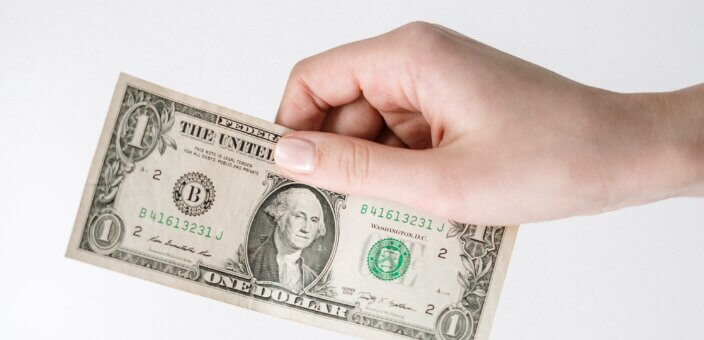When you’re shopping around to find a good home for your cash, you might see some very high APYs advertised. At first, this probably seems like a good thing. However, if you dig into the fine print for some of these accounts, you’ll notice that the advertised rate can actually have all kinds of strings attached to it. These strings generally are a way for banks to trade one source of revenue for another so they can make more money from you in other ways if they agree to pay you a lot of interest. And unfortunately, banks are often not transparent about those requirements up front.
At Wealthfront, we’re big believers in transparency, which is why the rate we advertise (which is currently among the highest rates on the market) is the rate you get. We don’t make you jump through hoops to get that high rate. We offer a high APY across the board (currently 5.00%) because we fundamentally believe in paying people as much interest as we can. We don’t want to play games.
In this post, we’ll explain some of the ways banks and other financial institutions avoid paying you a high APY so they can ensure they make the most revenue off their customers. Hopefully, this information will help you spot these tricks more easily and make an informed decision about where to keep your cash.
Direct deposit requirement
In general, banks like getting your direct deposit. Getting your paycheck is a predictable source of deposits (on which your bank can make money) on a regular schedule, and it signals to your bank that you’re probably treating the account as your primary account. For that reason, banks will sometimes require you to set up direct deposit (potentially of a minimum size) in order to get a high APY.
Maximum balance limits
Earning more interest is powerful — it compounds over time and can help you reach your financial goals faster. Unfortunately, some institutions limit the amount of deposits they’ll pay you a high interest rate on to ensure you don’t earn so much interest that it has a powerful impact on their bottom line. These limits can be surprisingly low — we found a bank with a limit of just $10,000. It’s wise to keep your funds at an institution that will pay you a high APY on all of your deposits, not just some of them.
Minimum balance limits
While some banks limit the amount of money on which you can earn interest, others will require you to hold large minimum balances with them just to get their advertised APY. These requirements can be prohibitively high, and might even force you to hold more cash than you otherwise would (which can be a bad thing for your long-term wealth). For example, we found a bank that requires a $25,000 minimum balance in order to earn interest in their account.
Required minimum debit card transactions
Debit card interchange (or the fees banks earn from debit card transactions) are another way for banks to make money. As a result, some banks will agree to pay you a high interest rate (effectively decreasing the amount they earn on your deposits) as long as they know they’ll earn a certain amount of interchange from your debit charge transactions. For example, one bank requires you to spend $1,000 a month on their debit card to get their preferred APY. While you won’t pay interchange fees directly, the requirement does mean you’ll have to miss out on credit card loyalty points just to hit the minimum debit card spend to get a good APY.
Paid subscription
Sometimes banks will ask you to pay a subscription fee to access a high APY. In other words, if you pay them more, they’ll pay you more. These fees can cost a significant amount — in some cases, as much as $125 a year. But before you fork over a hefty subscription fee, you should check to make sure you’ll actually earn enough in extra interest over the course of the year to justify it. Unless your account balance is very large or the interest rate is much, much higher than what you’d get elsewhere, it’s unlikely you’ll come out ahead. An online calculator like this one from Nerdwallet can help with the math.
Loan requirements
At a high level, banks can earn more money from you in two ways: they can get you to deposit more money into an account you already have with them, or they can get you to use additional accounts, products, and services they offer. For example, some banks will pay you a high APY if you take out a loan from them (and in order to take out this loan, you might need to have a cash balance of a certain size, which arguably defeats the purpose of the loan). They do this because you’ll owe the bank interest on that loan, which means you’ll likely pay your bank more than they pay you on your deposits, meaning the bank still comes out ahead.
Teaser rates
As the name “teaser rate” suggests, banks will sometimes lure you into opening an account or depositing more money with a temporarily high APY for a limited amount of time. You might see the promotional rate advertised prominently and then have to dig into the fine print to learn how long it’ll actually be available (often just a few months) before dropping significantly. Unfortunately, once that offer expires, you typically go back to earning a lower, less competitive APY. Banks are willing to do this because they hope you’ll stick with them when the APY goes down again, which means the bank will go back to keeping more of what they earn on your deposits instead of sharing it with you. It’s important to make sure you’re happy with the bank’s base rate, not just their teaser rate.
Beware the asterisk
If you see an interest rate with an asterisk next to it, that’s often a good indicator that something unseemly is afoot. Keep in mind that the examples in this post are not exhaustive. We encourage you to keep your short-term savings at an institution you trust to pay you a competitive APY over time without a bunch of cumbersome requirements.
Wealthfront has a documented history of paying a high APY to all of our clients and passing along the vast majority of each federal funds rate increase since the Cash Account’s inception. We plan to keep doing exactly that, whether or not you use our other products or spend a certain amount on our debit card. In addition to a high APY (currently 5.00%), our Cash Account also offers:
- FDIC insurance of up to $8 million through our partner banks (this is 32x what you get from a traditional bank) and up to $16 million for joint accounts
- Absolutely no account fees
- Fast and easy access to your cash with unlimited free transfers to external accounts and a network of 19,000+ free ATMs
- Near-instant transfers to Wealthfront’s award-winning investing account to invest your money in minutes during market hours
- Best-in-class automation features so you can sort your cash into categories and track progress against your goals
We built the Wealthfront Cash Account to be the ideal home for your cash, whether you’re building an emergency fund, saving for a large purchase like a down payment, or just keeping cash handy for everyday expenses. The Cash Account is a great place to keep your short-term savings so they grow even faster — no strings attached.
Disclosure
We’ve partnered with Green Dot Bank, Member FDIC, to bring you checking features.
Checking features for the Cash Account are subject to identity verification by Green Dot Bank. Debit Card is optional and must be requested. Wealthfront Cash Account Visa(Registered TM) Debit Card is issued by Green Dot Bank, Member FDIC, pursuant to a license from Visa U.S.A. Inc. Visa is a registered trademark of Visa International Service Association. Green Dot Bank operates under the following registered trade names: GO2bank, GoBank, Green Dot Bank and Bonneville Bank. All of these registered trade names are used by, and refer to, a single FDIC-insured bank, Green Dot Bank. Deposits under any of these trade names are deposits with Green Dot Bank and are aggregated for deposit insurance coverage. Wealthfront products and services are not provided by Green Dot Bank. Green Dot is a registered trademark of Green Dot Corporation. Copyright 2022 Green Dot Corporation. All rights reserved.
Other fees apply to the checking features. Fee-free ATM access applies to in-network ATMs only. For out-of-network ATMs and bank tellers a $2.50 fee will apply, plus any additional fee that the owner or bank may charge. Other eligibility requirements for mobile check deposit and to send a check may apply. Please see the Deposit Account Agreement for details.
The Annual Percentage Yield (APY) for the Cash Account may change at any time, before or after the Cash Account is opened. The APY for the Wealthfront Cash Account represents the weighted average of the APY on the aggregate deposit balances of all clients at the program banks. Deposit balances are not allocated equally among the participating program banks.
The cash balance in the Cash Account is swept to one or more banks (the “program banks”) where it earns a variable rate of interest and is eligible for FDIC insurance. FDIC insurance is not provided until the funds arrive at the program banks. FDIC insurance coverage is limited to $250,000 per qualified customer account per banking institution. Wealthfront uses more than one program bank to ensure FDIC coverage of up to $8 million for your cash deposits. For more information on FDIC insurance coverage, please visit www.FDIC.gov. Customers are responsible for monitoring their total assets at each of the program banks to determine the extent of available FDIC insurance coverage in accordance with FDIC rules. The deposits at program banks are not covered by SIPC.
The information contained in this communication is provided for general informational purposes only, and should not be construed as investment or tax advice. Nothing in this communication should be construed as tax advice, a solicitation or offer, or recommendation, to buy or sell any security. Any links provided to other server sites are offered as a matter of convenience and are not intended to imply that Wealthfront Advisers or its affiliates endorses, sponsors, promotes and/or is affiliated with the owners of or participants in those sites, or endorses any information contained on those sites, unless expressly stated otherwise.
Cash Account is offered by Wealthfront Brokerage LLC (“Wealthfront Brokerage”), a Member of FINRA/SIPC. Neither Wealthfront Brokerage nor any of its affiliates are a bank, and Cash Account is not a checking or savings account. We convey funds to partner banks who accept and maintain deposits, provide the interest rate, and provide FDIC insurance. Investment management and advisory services–which are not FDIC insured–are provided by Wealthfront Advisers LLC (“Wealthfront Advisers”), an SEC-registered investment adviser, and financial planning tools are provided by Wealthfront Software LLC (“Wealthfront”).
Wealthfront, Wealthfront Advisers and Wealthfront Brokerage are wholly owned subsidiaries of Wealthfront Corporation.
Copyright 2022 Wealthfront Corporation. All rights reserved.
About the author(s)
Tony Molina is a Product Evangelist at Wealthfront. He is a Certified Public Accountant (CPA) and holds Series 66 and Series 7 licenses from FINRA. View all posts by Tony Molina, CPA



